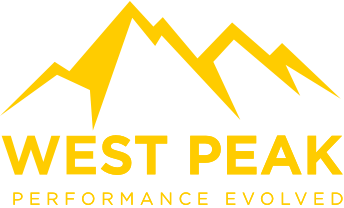Memory Techniques: 6 Ways to Remember Everything You Learn
80% of new knowledge gets lost in the void. Sound familiar? This is why memory techniques are essential. You’ve just finished reading a book, attending a course, or even watching an insightful video. You feel enlightened—ready to apply all the new knowledge. A week later, the excitement fades. A month later, what was once crystal clear becomes foggy. By a year, the knowledge seems to have disappeared into thin air.
It’s frustrating to invest time into learning, only to lose most of it along the way. The good news? It doesn’t have to be that way. We’ve gathered six scientifically proven techniques to help you retain (almost) everything you learn. Let’s dive in and keep those valuable lessons from slipping away.
Why Memory Techniques are Essential for Lifelong Learning
Before diving into the techniques, it’s important to understand why training your memory matters. Just like physical muscles, your brain needs consistent exercise to stay sharp and efficient. In today’s fast-paced world, we’re constantly bombarded with new information, but without the right strategies, much of it slips away. Strengthening your memory is key to not only retaining valuable knowledge but also improving your ability to apply what you’ve learned in real-life situations. Whether you’re trying to excel at work, sharpen your skills, or simply enjoy lifelong learning, these memory techniques will help you store and retrieve information when you need it most—turning you from a knowledge collector into a knowledge applier.

- The Leitner System: Master Flashcard Efficiency
The first method on our list comes from a simple yet powerful flashcard system designed to supercharge your memory. The Leitner System isn’t just a set of flashcards; it’s a system that helps you prioritise what you review.
How it works:
- You create a set of flashcards, each with a question on one side and the answer on the other.
- As you review, you sort them by difficulty: easier ones move further back in your rotation, while harder ones stay at the front for frequent review.
By focusing more on difficult topics and less on what you already know, this system optimises your learning time. Think of it like a personal trainer for your brain—pushing you where you need it most. This method is especially effective for subjects like languages or technical skills, where repetition is key.
Want to dive deeper into prioritising tasks and skills? Check out our blog on time management for more insights.
2. SQ3R Method: Turn Reading into an Active Process
Reading a textbook or article? The SQ3R Method turns passive reading into a proactive learning journey. This method encourages deeper engagement with material, which helps improve comprehension and retention.
How it works:
- Survey: Skim the content to get an overview.
- Question: Form questions around the material you’re about to read.
- Read: Dive into the content, searching for answers.
- Recite: Summarise the main points in your own words.
- Review: Go back over your notes to reinforce your understanding.
The SQ3R method ensures that you not only read but actively digest what you’re learning. This technique is particularly useful for academic material or lengthy reports.

- Cornell Note-Taking: Notes with Structure and Purpose
If you’ve ever felt lost in a sea of unorganised notes, the Cornell Note-Taking method can save you. Developed at Cornell University, this system divides your notes into structured sections, making them easier to review.
How it works:
- Divide your page into three sections: key points on the left, details on the right, and a summary at the bottom.
- As you take notes, you fill in key ideas on one side and the corresponding details on the other.
- Once your session is over, summarise the entire page.
The summary forces you to process what you’ve learned in a concise manner, making it easier to retain. This method works wonders for lectures, training sessions, or even podcasts where there’s a lot of information to absorb quickly.
- Dual Coding: Engage Multiple Senses
Want to lock information into your brain? Dual Coding is the answer. This method combines two types of information—visual and verbal—to make learning more effective. When your brain processes the same information in multiple forms, it’s more likely to stick.
How it works:
- Pair your notes with visuals—diagrams, flowcharts, or even mind maps.
- Explain concepts in words alongside visuals to create strong connections between them.
For example, if you’re learning about the structure of a company, visualising an organisational chart while reading descriptions helps reinforce the information. It’s a one-two punch that increases recall.
This technique has been particularly effective in studies where visual learners benefited most. Don’t just read—engage your senses to cement your understanding.

- Method of Loci: Create a Mind Palace
This ancient memory technique, also known as the Method of Loci, is the ultimate hack for turning abstract concepts into vivid memories.
How it works:
- Picture a familiar place—your house, the streets of your town, or even your office.
- Now, place the concepts or facts you want to remember at different locations along a mental path through that space.
By associating new information with well-known environments, you create a “mind palace” where each room, object, or corner holds a piece of knowledge. The next time you need to recall something, just take a mental stroll through your palace.
This technique has been used for centuries by memory champions and is a game-changer when it comes to remembering large amounts of data, like lists or sequences.
- The Feynman Technique: Teach What You Learn
Nobel Prize-winning physicist Richard Feynman had a simple philosophy: if you can’t explain it simply, you don’t understand it well enough. This idea formed the basis of the Feynman Technique, which is both a learning tool and a way to discover gaps in your knowledge.
How it works:
- Choose a concept you want to learn.
- Pretend you’re teaching it to someone else—use simple language, as if explaining it to a child.
- As you explain, you’ll uncover areas where your understanding is shaky. Go back, review, and refine.
This technique forces you to deeply engage with the material, ensuring you understand it on a fundamental level. It’s great for preparing presentations or solidifying knowledge in your field of expertise.
Be a Knowledge Applier, Not Just a Knowledge Collector
Don’t let the information you work so hard to learn evaporate. By incorporating these six memory techniques—Leitner System, SQ3R, Cornell Note-Taking, Dual Coding, Method of Loci, and the Feynman Technique—you’ll not only retain more but apply your knowledge more effectively.
The real goal isn’t to simply learn but to take action with what you learn. The more you apply your knowledge, the closer you get to achieving your goals.
Subscribe to our Podcast
Hosted by our very own Ben Stocken and Benjamin Wade our ‘How They Lead’ podcast aims to evolve the way people perform in leadership roles by showcasing a variety of high performance interviews with people from Patrick Kershaw from The RAF Red Arrows to CEO’s like Steve Phillips who help large brands like Pepsi, Mars and Unilever.
Get one step ahead – Click below to subscribe.










